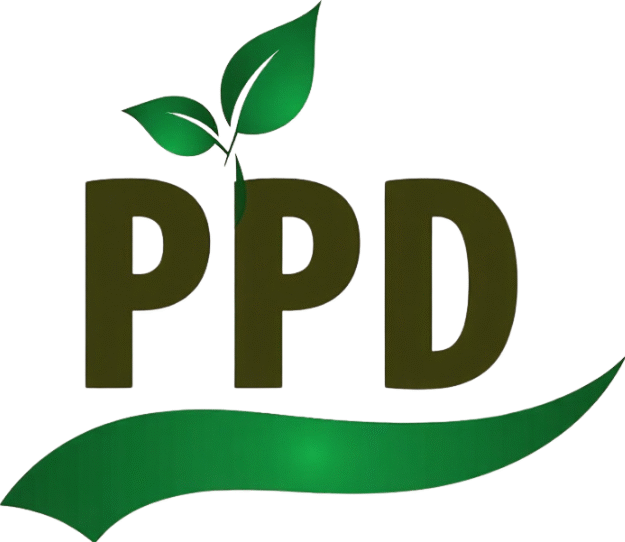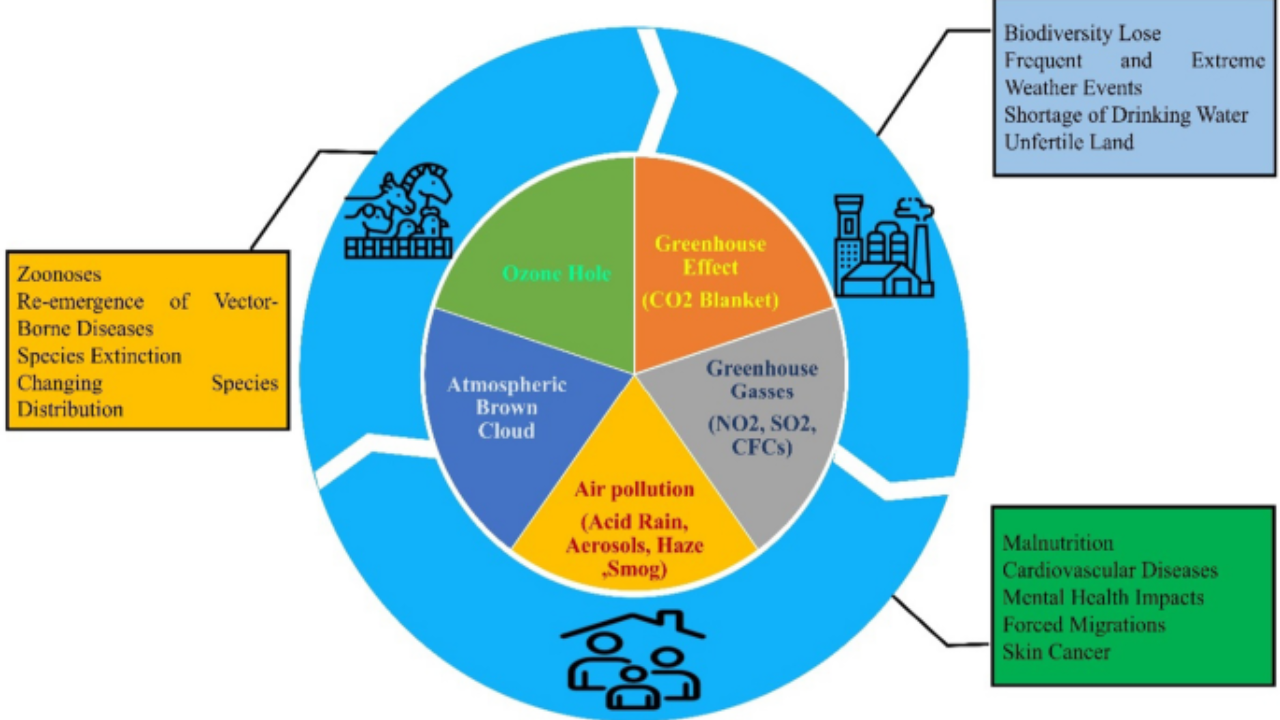
Climate change is no longer a distant concern—it is rapidly transforming agricultural systems across Southeast Asia. One of its most pressing yet often under-recognized consequences is the shift in pest and disease dynamics. From erratic outbreaks to the emergence of new invasive species, farmers are now grappling with unpredictable challenges that directly threaten food security, livelihoods, and economic stability in the region.
This article explores how climate change is influencing pest and disease patterns in Southeast Asia, identifies the vulnerable crops and regions, highlights scientific observations and responses, and suggests the way forward.
How Climate Change Alters Pest and Disease Patterns
Climate change affects the biology, ecology, and behavior of pests and pathogens in several interconnected ways:
- Higher Temperatures Accelerate Pest Reproduction
- Warmer climates speed up life cycles of pests like brown planthopper, leading to more generations per season.
- Heat-tolerant pests expand into new areas that were once too cool for their survival.
- Unpredictable Rainfall Favors Disease Spread
- Heavy rains and flooding promote fungal and bacterial diseases (e.g., rice blast, bacterial leaf blight).
- Drought stress weakens plant defenses, making crops more vulnerable to infection.
- Shifting Crop Calendars Influence Pest Synchrony
- Altered planting and harvesting seasons cause mismatches or new overlaps in pest and host availability.
- Increased Range of Invasive Species
- Species like fall armyworm and Tuta absoluta are now found in parts of Southeast Asia previously unaffected.
Crops and Regions at Risk
Climate-sensitive crops, especially rice, maize, fruits, and vegetables, are seeing increased pest pressure.
| Crop | Emerging Climate-Linked Threats |
|---|---|
| Rice | Brown planthopper, rice blast, sheath blight |
| Maize | Fall armyworm, stem borers |
| Vegetables | Aphids, whiteflies, viral diseases |
| Fruits (banana, mango) | Anthracnose, fruit flies, bacterial wilt |
| Pulses | Pod borers, Helicoverpa, Fusarium wilt |
Hotspot regions include:
- Delta regions (e.g., Mekong, Irrawaddy): Flood-borne diseases
- Upland areas (e.g., northern Laos, Vietnam highlands): Pest migration due to warming
- Island nations (e.g., Philippines, Indonesia): Tropical storms enhancing disease outbreaks
Observed Trends and Scientific Evidence
Recent studies and field reports confirm:
- Increase in pest outbreak frequency: Vietnam recorded over 15 major brown planthopper outbreaks in the last decade, up from fewer than 5 in the 1990s.
- Earlier onset of diseases: Fungal diseases now appear weeks earlier in the season.
- Resistance build-up: Pests are evolving resistance to conventional pesticides faster under climate stress.
In Myanmar, Thailand, and Cambodia, national pest surveillance programs have documented northward and upland shifts of major pests like armyworms, mirid bugs, and leaf folders.
Institutional and Regional Responses
Governments, research institutes, and ASEAN frameworks are taking steps:
- Climate-Smart Pest Surveillance
- Use of satellite data, remote sensing, and predictive models to forecast outbreaks.
- Example: IRRI’s Rice Crop Health Monitoring in collaboration with national NPPOs.
- Integrated Pest and Disease Management (IPM/IDM)
- Adjusting pest management strategies to align with climate variability.
- Emphasizing biological control and crop diversification.
- Early Warning Systems
- Real-time alerts to farmers through SMS or mobile apps in the Philippines, Vietnam, and Indonesia.
- Policy Initiatives
- Regional harmonization through ASEAN Climate Resilience networks.
- Funding from FAO, ADB, and STDF for climate-resilient agriculture projects.
Emerging Innovations and Tools
- Pest and Disease Forecasting Models
- Based on temperature, humidity, and rainfall simulations.
- GIS Mapping
- Identifies risk zones and tracks spread of invasive species.
- Climate-Resilient Crop Varieties
- Breeding for pest resistance under stress conditions (e.g., drought-tolerant and blast-resistant rice).
- Farmer Advisory Platforms
- Digital tools combining weather data with pest management tips.
Overview Table: Climate Impact on Pest and Disease Patterns
| Climate Factor | Impact on Pests/Diseases | Impacted Crop | Region |
|---|---|---|---|
| Rising Temperature | Faster pest life cycles | Rice, Maize | Mainland & Upland SEA |
| Unpredictable Rainfall | Spread of fungal and bacterial diseases | Vegetables, Rice | Delta and coastal areas |
| Drought | Plant stress increases susceptibility | Pulses, Fruit crops | Dry zones |
| Warmer Winters | Reduced pest die-off, new seasonal outbreaks | Vegetables | Highlands and mid-hills |
| Cyclonic Storms | Spread of wind-borne pests and water-borne diseases | Fruits, Rice | Island and coastal areas |
Challenges in Adapting to Climate-Pest Linkages
- Data Gaps: Limited historical pest-climate correlation data.
- Infrastructure Limitations: Lack of diagnostic labs and trained personnel in rural areas.
- Farmer Awareness: Low understanding of climate-pest interactions.
- Inconsistent Policy: Climate change and plant health often handled by separate departments.
The Way Forward: Building Climate-Resilient Pest Management
- Strengthening Regional Research Collaboration
- Joint studies across ASEAN on climate-pest dynamics.
- Scaling Predictive Tools
- Integrate weather and pest data into farmer advisory systems.
- Enhancing Farmer Capacity
- Use of climate-smart IPM training and digital learning platforms.
- Cross-Sectoral Policy Integration
- Merge pest management, climate adaptation, and agricultural development into unified national strategies.
- Incentivizing Sustainable Practices
- Subsidies for biocontrol, pest-resistant seeds, and training in climate-smart practices.
Conclusion
Climate change is not just altering the weather—it’s reshaping the invisible battlefield between crops and pests. In Southeast Asia, where agriculture is the backbone of rural livelihoods and economies, understanding and responding to these shifting pest and disease patterns is now urgent. Through science, technology, and regional cooperation, the region can mitigate these threats and build a more resilient food system for the future.
Top 3 One-Line FAQs
Q1: How is climate change affecting pests and diseases in Southeast Asia?
A: It’s increasing pest reproduction, expanding invasive species, and altering disease patterns due to warming and erratic rainfall.
Q2: Which crops are most vulnerable to climate-driven pests?
A: Rice, maize, vegetables, fruits, and pulses are among the most affected.
Q3: What is being done to address climate-related pest threats?
A: Governments and researchers are deploying surveillance tools, forecasting models, and climate-smart pest management strategies.

